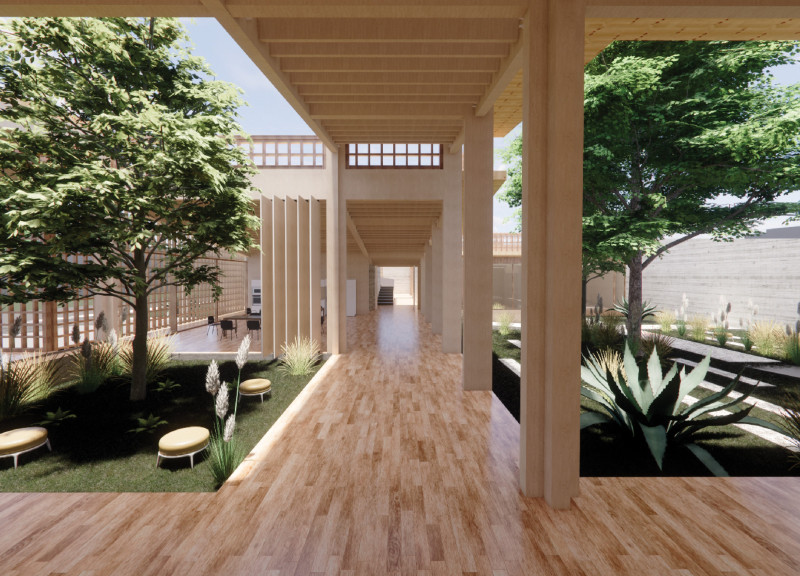5 key facts about this project
This project is characterized by its multifunctional approach, with spaces designed to accommodate various activities seamlessly. The central gathering area acts as a focal point, encouraging social interaction among users. Surrounding this communal hub, smaller spaces are designed for more intimate gatherings, workshops, and individual pursuits. Such an arrangement prioritizes versatility and accessibility, reflecting modern needs within architectural design. This multifunctionality is a critical aspect that demonstrates a comprehensive understanding of contemporary societal demands.
Materiality plays a significant role in defining the project's character. The use of local stone not only connects the structure to its geographical roots but also ensures durability and sustainability. Complementing this are large expanses of glass that allow for ample natural light while providing stunning views of the surrounding landscape. The juxtaposition of solid and transparent materials creates a sense of openness, enhancing the sense of space within the structure. Furthermore, the incorporation of green roofs and terraces integrates nature into the building itself, blurring the lines between indoors and outdoors. This connection to nature is fundamental in contemporary architectural design, encouraging user engagement with the environment.
Unique design approaches are evident throughout the project, particularly in its response to climatic conditions. By employing passive design strategies, the structure maximizes energy efficiency. Orientation and shading elements are carefully considered to optimize natural light and reduce reliance on artificial lighting and climate control systems. This environmentally conscious approach not only minimizes the project's carbon footprint but also speaks to a growing trend in architecture that prioritizes sustainability through intelligent design.
The project's architectural plans reflect a coherent narrative that aligns with its intended purpose, ensuring that each design element contributes to functionality and aesthetics. The architectural sections further illustrate the thoughtful layering of spaces, highlighting how vertical and horizontal movements within the structure create varying experiences for users. These elements work collaboratively to emphasize the flow of the building, making navigation intuitive while enriching the overall user experience.
Architectural designs within the project also showcase a keen eye for detail, with each junction of materials carefully considered. The harmony between different materials speaks to a level of craftsmanship that is becoming increasingly valued in architectural practice. This attention to detail not only enhances the visual interest of the structure but also underscores the importance of quality in architectural outcomes.
In summary, this architectural design project represents a meaningful response to its context, emphasizing both functionality and aesthetic integrity. The combination of thoughtful design, sustainable material choices, and innovative approaches to space utilization illustrates a comprehensive understanding of contemporary architectural challenges and opportunities. For those interested in delving deeper into the intricacies of this project, exploring the architectural plans, architectural sections, and various architectural ideas presented will provide further insights into its unique design characteristics and how they collectively contribute to the overall vision.


 Carlos Daniel Villagran Serrano
Carlos Daniel Villagran Serrano 




















